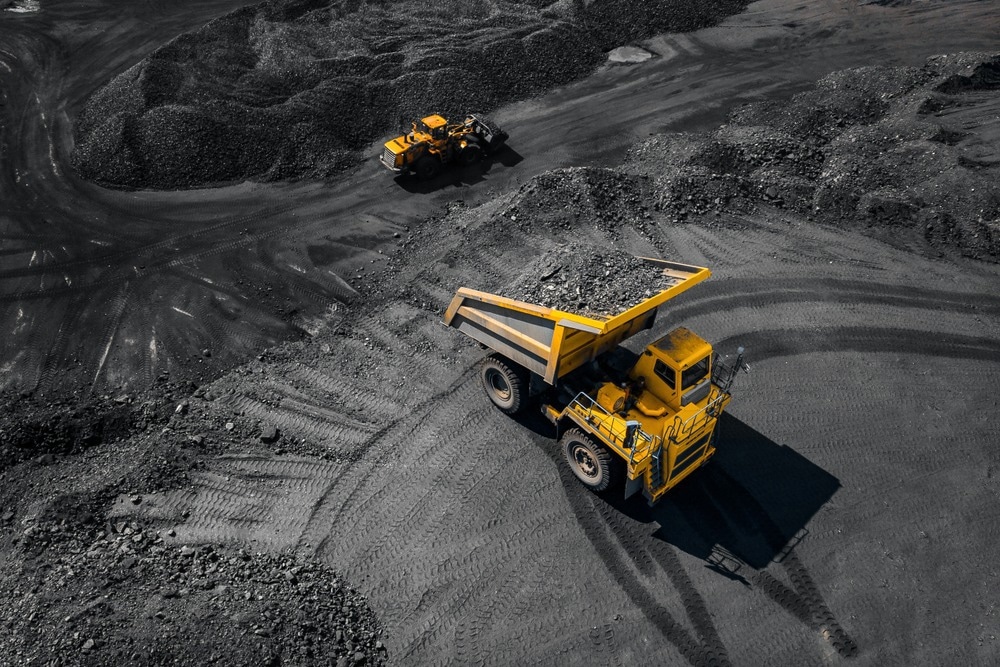Decommissioning is becoming increasingly important in the mining industry due to combined economic, political, and environmental factors. But it is often a complex, lengthy, and expensive endeavor that involves removing hazardous materials, remediating soil and groundwater quality, and demolishing and disposing of mine structures. New research investigates the geotechnical challenges of decommissioning a coal mine in Greece.

Image Credit: Parilov/Shutterstock.com
Decommissioning a Coal Mine: Geotechnical Challenges
The fossil fuel energy sector has undergone changes recently that require coal mining companies to plan for the entirety of a mining operation’s life cycle. This includes developing a plan to decommission and close mines when they are no longer profitable.
Surface coal mining poses a particular set of geotechnical challenges to decommissioning engineers. These include the long-term stability of the slopes around the edges of the pit, particularly when the pit is likely to gradually fill up with water in the years after the mine has stopped functioning.
Investigating slope stability issues such as these, researchers recently examined the condition of the Amyntaion surface lignite mine in a relatively remote and mountainous part of Greece.
Researchers from the National Technical University of Athens and the Public Power Corporation of Greece investigated under what parameters the safety factor of a decommissioned coal mine could change over time, particularly in light of filling up with rainwater.
Their work could form the basis of preliminary closure studies of other kinds of surface coal mines, the authors said. More of these kinds of investigations are required to provide more data to accurately plan mining operation closures and decommissioning while ensuring long-term public safety and environmental remediation.
Why are Mines Decommissioned?
The purpose of decommissioning mine facilities is to make the land structurally stable and capable of future productive use – referred to as green field land. Greenfield projects ensure maximum flexibility for the land after the mine closure and minimize the requirement for ongoing maintenance.
As well as repairing the land itself, mine decommissioning may also include the removal of harmful or toxic materials. This involves cleaning and removing pipelines, equipment and mine structures, as well as ensuring no waste material is left to run off toxic materials into local soil and water systems.
How Are Mines Decommissioned?
Mine decommissioning experts generally follow a few key steps to ensure that mines are successfully decommissioned and returned to greenfield land.
Infrastructure and plant machinery are demolished and removed safely. Mining processing facilities and equipment need to be dismantled, pipelines need to be thoroughly drained and cleaned, and the surrounding area needs to be cleaned and waste disposed of.
Engineers must confirm the structural stability of the remaining landforms (piles, pits, and so on) as well as any structures deemed safe to leave intact. Decommissioning a mine sometimes requires new construction to ensure the remaining landforms and structures will remain structurally sound for decades.
Watercourses and drainage structures, where they have been used, also need to be carefully checked over by engineers to ensure they are running smoothly.
Once waste and infrastructure are removed and the structural integrity of the site has been established, decommissioning projects then have to remediate any contaminated areas from toxic pollutants.
A monitoring phase follows the initial phase of decommissioning. This is a set period in which engineers continually identify potential issues as they arise, and ensure necessary steps are taken to deal with any problems.
Sometimes, long-term maintenance is called for to make sure that the mine site remains safe, both in terms of public and animal safety and the wider environment.
Challenges of Mine Decommissioning
Closing mines is a complicated, multidisciplinary challenge that requires extensive planning and coordinated, sustained effort from industry and the regulatory bodies.
Ideally, no new mines would open without a clearly established and agreed upon plan for post-mining land use that has been developed in real consultation with local communities and elected bodies.
These plans should include accurate and regularly updated estimates for the scale and cost of decommissioning a mine throughout its lifecycle so that stakeholders can remain informed of the total life costs of the mine.
The social transition of workers and communities in terms of employment, infrastructure, and social structures should also be considered from the outset in new mining operations.
Provision of a ring-fenced budget within mining companies’ accounts for decommissioning any mine they operate ensures that mines are adequately decommissioned in the event of their owners declaring bankruptcy.
Unfortunately, there are only a handful of examples of mines that have received closure certificates and returned to a third party worldwide.
A recent survey of International Council on Mining and Metals members revealed that around 40% of current mining operations are due to close in the next 25 years. There is a significant opportunity to ensure that these mines are decommissioned appropriately.
References and Further Reading
Decommissioning of Mining and Energy Assets and Infrastructure. (2021) [Online] Mining Technology. Available at: https://www.mining-technology.com/sponsored/decommissioning-mining-energy-assets/ (Accessed on 21 June 2022).